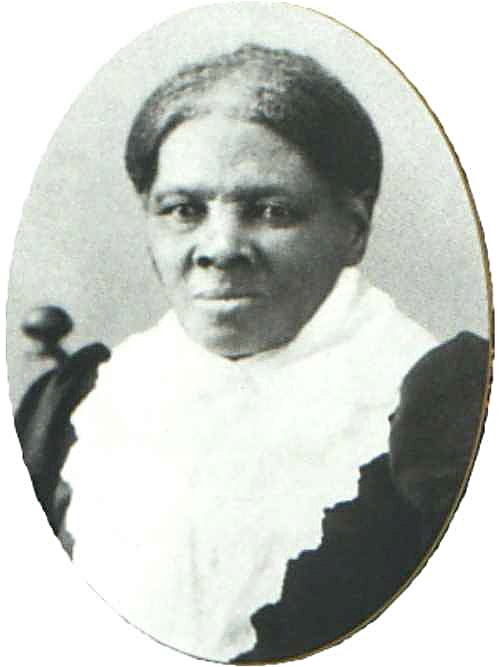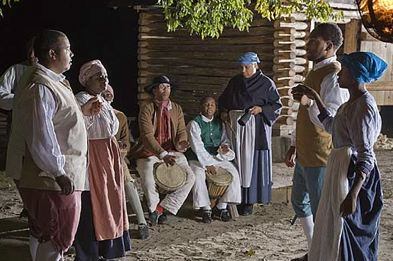 February is Black History Month, and with the recent election of our nation’s first African-American president, its significance is probably garnering more attention than ever since its inception in 1976.
February is Black History Month, and with the recent election of our nation’s first African-American president, its significance is probably garnering more attention than ever since its inception in 1976.
Black History Month highlights the experiences of African Americans, from the origins of slavery, through the path of the underground railroad, to the lives of famous civil rights leaders, right on up to the inauguration of President Barack Obama.
Many hotels and tour operators are offering rooms, attractions and tours near significant places in African-American history, often with significant discounts.
Learn About Abolitionist History in Maryland
To highlight the history of the abolitionist movement and two of its heroes, Frederick Douglass and Harriet Tubman, Eastern Shore Vacation Rentals (ESVR) is offering a unique package that includes lodging and a self-guided driving and walking tour of Talbot, Dorchester and Caroline Counties in Maryland.
Frederick Douglass was born into slavery in Talbot County, and spent much of his early life on a plantation called Mt. Misery (which incidentally now belongs to Donald Rumsfeld). He was later jailed in the Easton County Jail.
Years after he gained his freedom, Douglass returned to Talbot County as an author, lecturer and U.S. ambassador, and gave a historic speech on education from the steps of the Talbot County Courthouse. Both the courthouse and the jail remain virtually untouched since Douglass’s time. The tour allows visitors to see both buildings, as well as Douglass’s birthplace and the plantation where he was raised.
 Harriet Tubman, a leader and guide in the Underground Railroad, was born on a plantation not far from Douglass in Dorchester County. After securing her own freedom, Tubman established one of the most successful routes to freedom for southern slaves. She was also the first woman to lead an armed expedition for the Union Army during the Civil War. In addition to the Tubman Museum and Education Center, visitors can take a 105-mile driving tour guiding them through key sites in Tubman’s life and in the creation of the Underground Railroad.
Harriet Tubman, a leader and guide in the Underground Railroad, was born on a plantation not far from Douglass in Dorchester County. After securing her own freedom, Tubman established one of the most successful routes to freedom for southern slaves. She was also the first woman to lead an armed expedition for the Union Army during the Civil War. In addition to the Tubman Museum and Education Center, visitors can take a 105-mile driving tour guiding them through key sites in Tubman’s life and in the creation of the Underground Railroad.
Guests who book the Black History month package will get 30 percent off their stay and can choose from among the 60-plus ESVR properties, from waterfront cottages to country estates. Most of the rentals are conveniently located along the tour route, which hugs the pristine Chesapeake Bay shoreline. Properties include:
- Easton’s Promise: an 1890s house with five bedrooms which is located in downtown Easton, two blocks from the historic courthouse and jail where Douglass made history.
- Captains Quarters: a seven-bedroom estate features an outdoor fireplace and dock along the Little Choptank River, close to several homes critical to Tubman’s success in moving slaves to freedom.
African-American Programs in Colonial Williamsburg
2009 marks the 30th year of African-American programming at Colonial Williamsburg. To celebrate this milestone and to commemorate Black History Month, a variety of special new events and programs are being offered in February and throughout the year to supplement Colonial Williamsburg’s excellent existing programming.
 Educational programs will explore how 18th-century race relations contributed to the formation of a national concept of citizenship, as well as the choices enslaved African Americans made as they tried to secure freedom and equality for themselves and their families. Performance events will include everything from street theater and musical performances in the Historic Area, to museum exhibits, to online games for kids—all with the mission of teaching the evolution of African-American life and showcasing the development of citizenship.
Educational programs will explore how 18th-century race relations contributed to the formation of a national concept of citizenship, as well as the choices enslaved African Americans made as they tried to secure freedom and equality for themselves and their families. Performance events will include everything from street theater and musical performances in the Historic Area, to museum exhibits, to online games for kids—all with the mission of teaching the evolution of African-American life and showcasing the development of citizenship.
The new programs will be available all year, but two special weekends are planned which will include additional activities and performances such as food demonstrations and special storytelling sessions. The official commemoration of Black History Month will take place the weekend of February 21-22, and the 30th anniversary of Colonial Williamsburg’s African-American programming will be celebrated the weekend of April 4-5.
The six hotels and inns of the Colonial Williamsburg Resort Collection are offering the America’s Historic Triangle Package with rooms from $65 per night. The package has a two-night minimum requirement and includes nightly accommodations, daily breakfast in your hotel, an admission ticket for the Colonial Williamsburg, Jamestown and Yorktown historic sites, and rides on the Historic Triangle Shuttle to ferry you between the three sites.
New York State and the Underground Railroad
New York State was at the forefront of the Underground Railroad movement, and its prime location and politics made it a destination of choice for many African-Americans fleeing slavery along the Eastern seaboard. Nearly 200 years later, it’s one of two states with an African-American governor.
Tours of historic sites, special exhibits, lectures and seminars will all be offered throughout the Empire State in February to help provide a better understanding of this crucial period in history. New York State has more than 35 sites along its Underground Railroad Heritage Trail, including the following highlights:
- The Harriet Tubman Home, Auburn, NY. A registered National Historic Landmark since 1975, Tubman started the Harriet Tubman Home for elderly blacks Americans after leading over 300 slaves to freedom. Today, as a meeting place for youth conferences and a cultural enrichment center, the Harriet Tubman Home proudly fulfills Tubman’s dream of serving the black community. www.harriethouse.org
- National Abolition Hall of Fame and Museum, Peterboro, NY. The museum is located in the building where the New York State Anti-Slavery Society convened for its inaugural meeting October 22, 1835. The Hall of Fame honors antislavery abolitionists, their work to end slavery and the legacy of that struggle. Visits are by appointment only. www.abolitionhof.org
- Hendrick I. Lott House, Brooklyn, NY. Built in 1792, the Lott House originally housed slaves who were freed in 1805, two years before the U.S. Constitution banned the importation of human beings. The Lott House was one of a series of homes and churches that provided a connecting point for slaves seeking a route to Long Island. This area was fairly isolated and populated heavily by Dutch Quakers and those sympathetic to the plight of escapes. www.lotthouse.org
- Beginning in April 2009, the city of Albany will be offering an underground railroad walking tour in the downtown area. Go to www.ugrworkshop.com for more details on dates and times.
A series of lectures, exhibits and conferences will also be held across the state to educate and inform about the public about key historical dates and events.
The Castellani Art Museum in Niagara has a permanent installation titled “Freedom Crossing: The Underground Railroad in Greater Niagara” which tells the story of the Buffalo-Niagara region’s role in the Underground Railroad anti-slavery movement through historic photographs, artifacts, stories, video stations and artwork. www.freedomcrossingniagara.com
The Chemung Valley History Museum in Elmira will host a Black History lecture series throughout the month of February. Topics will include “Free Black Communities in the Antebellum North,” and “Mark Twain and the Problems of Race.” www.chemungvalleymuseum.org
B&Bs Along the Underground Railroad
 In recognition of Black History Month, BedandBreakfast.com has created an index of B&Bs that were once conductors or stations on the Underground Railroad. Travelers who stay in any of the more than 25 inns from Michigan to Florida can relive history while having an intimate guest experience. Some of the more notable ones include:
In recognition of Black History Month, BedandBreakfast.com has created an index of B&Bs that were once conductors or stations on the Underground Railroad. Travelers who stay in any of the more than 25 inns from Michigan to Florida can relive history while having an intimate guest experience. Some of the more notable ones include:
Hall Place B&B in Glasgow, Kentucky is one place where the Underground Railroad was literally underground. A cave under the house linked to a network of other caves that eventually surfaced at a nearby spring. Access to the caves through this inn and a number of other nearby homes earned the area the nickname “cave city.” Judge Christopher Tompkins, once a teacher for Abraham Lincoln and an Underground Railroad supporter, built Hall Place for his daughter. When he died, his will provided lifetime care for each of his slaves.
Munro House in Jonesville, Michigan is just steps from the Canadian border. You can still see the remains of a 100-foot-long stone-walled tunnel leading to the basement, and a secret room that once hid runaway slaves. Over 400 runaways allegedly spent at least a day hiding here on their way to freedom in Canada, with the help of the house’s original owner, George Clinton Munro.
For more information, visit www.bedandbreakfast.com/.
By Karen Elowitt for PeterGreenberg.com.
Don’t miss our travel help for Riding the Underground Railroad.
Or you can celebrate by checking out Barack Obama’s Chicago.
And don’t miss destination guides to top cities for African-American history, including:












